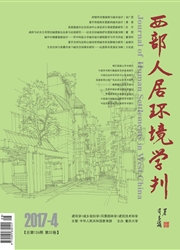

 中文摘要:
中文摘要:
关联耦合理论是当代城市设计的经典理论之一,强调研究城市形体环境中各构成元素之间存在的“线”性关系规律,并已被应用到城市规划、城市设计、建筑设计的各个层面.它为历史文化遗产保护提供了新的观察视角,推动了近年来新兴遗产保护类型(如区域遗产、文化线路等)的界定与保护,并深化了既有传统遗产类型(如历史纪念地、历史文化名城村镇等)的保护工作.本文通过探讨关联耦合理论与文化遗产保护的关系,提出文化遗产群落的概念,结合相关案例,梳理出以该理论为视角的文化遗产群落保护的一般方法,以期对中国文化遗产保护的实践提供一点思考.
 英文摘要:
英文摘要:
Associated coupling theory is one of the classical theories in modern urban design, which highlights the "line" law relationship among each element in the city environment, and has been widely utilized in lots of aspects in urban planning, urban design and architectural design. It also provides new perspective and methods for cultural heritage conservation, by promoting the recognition and protection of new cultural heritage types (regional heritage, cultural routes e.g.), and also deepening the existing heritage types (historical memorial places, the historical and cultural cities, towns and villages, e.g.). Through exploring the relationship between associated coupling theory and cultural heritage conservation, combining with relevant cases, this article analyzes the general methods of cultural heritage conservation in views of this theory, and provides some references for Chinese cultural heritage conservation practices.
 同期刊论文项目
同期刊论文项目
 同项目期刊论文
同项目期刊论文
 期刊信息
期刊信息
